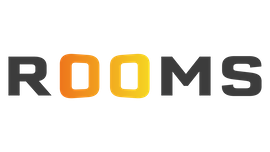Looking for the perfect Meeting Software? Our comprehensive buyers guide reviews and compares top options in 2024. Find the right fit for your team!
Meetings are an essential part of every organization. Unfortunately, coordinating a meeting can be a hassle, and the logistics involved are often time-consuming and overwhelming. That is where meeting software comes in. The software makes the planning and execution of meetings more efficient, saving you both time and money. The right one can streamline communication, improve collaboration, and eliminate the need for face-to-face meetings, no matter where participants are located. With so many options available in the market, it can be overwhelming to choose the right one. This buyer's guide will provide you with all the information you need to make an informed selection and save you from wasting valuable resources and budget.
What is meeting software?
This is a solution also known as a collaboration software, has become a critical tool for teams and companies alike. Simply put, it is a type of application that enables remote teams to collaborate and communicate with each other outside of a physical office space. These powerful tools provide teams with a variety of features designed to streamline the process of holding meetings and facilitate effective collaboration.
Some of the most common use cases for this solution include holding virtual meetings, taking notes during meetings, collaborating on projects, keeping track of schedules, and sharing documents. It also comes equipped with a range of features to assist with these various use cases, such as video conferencing, instant messaging, share screens, recording capabilities, and more.
This application is beneficial for companies across a range of industries, from small start-ups to large-scale enterprises. Big corporations benefit from the enhanced collaboration and improved productivity it provides. Smaller and mid-size teams also stand to gain a great deal from this invaluable tool, particularly in terms of minimizing operational costs and improving efficiency.
Here are some common use cases for this application:
-
Holding virtual meetings with remote team members or clients
-
Collaborating on projects across multiple teams or departments
-
Taking and sharing meeting notes to ensure everyone is on the same page
-
Sharing important files and information securely
-
Scheduling meetings and managing calendars
-
Recording meetings for future reference or to share with team members who were unable to attend.
Overall, meeting software has become an indispensable tool for modern teams looking to enhance communication, improve collaboration, and boost productivity. Companies that adopt it stand to benefit from improved organization, reduced costs, and increased efficiency.
What are the benefits of adopting a meeting solution?
Teams are often located in different regions, which makes face-to-face meetings difficult. Companies are using software to conduct virtual meetings. This section will highlight the importance of a collaboration software for businesses, and how it can benefit teams within an organization.
-
Convenient communication: Virtual meetings allow team members to meet without having to leave the office. This saves time and eliminates the need for travel, making it easy to collaborate with colleagues from different geographic locations.
-
Increased productivity: With an online meeting system, teams can instantly connect and collaborate, share documents, record the meeting and revisit the discussion later. This helps to facilitate decision-making by allowing all team members to contribute simultaneously.
-
Cost-effective: It eliminates the need for physical meeting rooms and travel costs, making it an affordable alternative for companies looking to cut costs.
-
Time-saving: Meetings can be scheduled and conducted easily, with all team members attending from their own locations, so there's no need to waste time gathering in one place or traveling between multiple locations.
-
Better work-life balance: Virtual meetings save time on travel, enabling team members to achieve a better work-life balance, resulting in a happier and more motivated workforce.
-
Accessibility and inclusivity: Meeting software provides a platform for team members with disabilities to participate in meetings, thus fostering a more inclusive and accessible work environment.
Meeting software has revolutionized the way organizations conduct business meetings. The advantages of using it are instrumental in breaking down geographical barriers and enabling teams to communicate, collaborate, and make decisions, no matter where they are. Whether it's saving time and money or increasing productivity and flexibility, the benefits of meeting software are clear.
10 key features of a meeting solution
Meeting software has become an essential tool for businesses to conduct productive and efficient virtual meetings. The program is designed to simplify the process of coordinating meetings and allows participants to connect remotely from anywhere in the world. Here are the top 10 common features that businesses can benefit from:
- Scheduling and calendar management: Meeting software streamlines the scheduling process by allowing participants to propose meeting times and dates, which can be added directly to their calendars.
-
Video conferencing: With the rise of remote work, a video conferencing platform has become a staple for virtual events. The solution offers high-quality video and audio calls, which allows participants to connect face-to-face and communicate effectively.
-
Screen sharing: Screen sharing is an important function, which allows participants to share their desktop screens with others in real-time. This feature is ideal for presentations and demonstrations.
-
Recording: It allows users to record meetings so that participants can revisit the session later. This feature also enables absentees to catch up on any missed discussions.
-
Whiteboarding and annotation: A collaboration solution enables the use of virtual whiteboards, which allows participants to brainstorm, sketch or map out ideas in real-time. This feature is especially useful for seamless collaboration.
-
Live chat: It also has a live chat feature, which allows users to communicate through text messages. This additional feature enables participants to make quick comments during a meeting without disrupting the flow.
-
Breakout rooms: This technology offers breakout rooms, which allows participants to split into smaller groups during a session. This built-in feature is ideal for brainstorming sessions and group discussion.
-
File sharing: With this tool, users can share files, documents, and other materials during a session. This feature is particularly useful for presentations and document sharing.
-
Security: It ensures secure virtual meetings by providing end-to-end encryption, password protection, and moderator controls.
-
Mobile compatibility: The collaboration tool is compatible with mobile devices, which enables mobile users to join meetings, irrespective of where they are.
Meeting software offers a wide range of functions that make virtual meetings productive and efficient. These key features are common to most solutions and provide businesses with all the tools they need to communicate and collaborate remotely.
Things to consider when adopting a meeting software
The world has come to rely on virtual communication as a way of life and companies are not an exception. As technology continues to evolve, a meeting application has become an increasingly important tool for business communication. With so many options available on the market, it can be difficult to select one that meets specific needs. This tool explores some of the factors to consider when purchasing a meeting software.
Ease of Use
The first factor to consider when selecting meeting software is its ease of use. The software should be user-friendly and intuitive so that everyone in the company can use it easily without extensive training.
Features
The second factor to consider is the functions of the collaboration software. Does it have the necessary features to meet the needs of your business? Advanced features such as screen sharing, video conferencing, calendar integrations, real-time chat, and recording options are essential for effective and efficient virtual meetings.
Compatibility
It’s important to ensure that the application you select is compatible with the hardware and operating systems used by your company. This includes compatibility with laptops, desktops, mobile devices, and various operating systems like Windows, Mac, and Linux.
Security
Businesses must prioritize security when selecting a collaboration platform. Look for one that offers end-to-end encryption, two-factor authentication, and other advanced security features to protect your confidential business information.
Support
The availability of technical support is a crucial factor to consider when selecting a collaboration program. Make sure that the one you choose provides excellent customer support with a quick response time, a knowledge base, and live support.
Pricing
Affordable pricing is a crucial factor to consider when selecting meeting software. Ensure that you have a budget in mind, and look for software that provides the necessary features at a reasonable price that aligns with your company's finances.
Selecting the right collaboration software can have a significant impact on running efficient and effective virtual meetings. Ensure that you consider the factors discussed above when making your decision. By doing so, you'll be able to find a meeting software that will meet your business needs, be user-friendly, secure, and within your budget.
Today's trends for a meeting system
Video conferencing software trends continue to evolve, driven by the increasing need for remote and hybrid work. A whopping 79% of the respondents who had used videoconferencing exclusively in a conference room indicated that they would use it more if they could do it from their desktop computer or PC laptop.
There are several key trends that are expected to shape the market. One trend is the integration of video, chat, and room management tools into a seamless hybrid workplace experience. This will allow users to collaborate more effectively, share resources, and make decisions in real-time.
Another trend is the emphasis on home office and studio upgrades for better audio and video quality in meetings. This will help ensure that participants are able to see and hear each other clearly, regardless of their location.
Virtual team bonding is also expected to gain more attention in the coming years, with the rise of apps that create a video version of the water cooler. These apps will allow team members to connect on a more personal level, build relationships, and feel more engaged in the company culture.
Finally, support for live video editing with post-production effects during live video calls will become more common. This will enable users to add visual elements to their presentations, making them more engaging and informative.
Conclusion
Overall, video conferencing technology is rapidly evolving, and organizations that wish to remain competitive will need to keep up with these trends. By adopting the latest tools and services, companies can improve productivity, collaboration, and engagement, and gain a competitive edge in 2024 and beyond.









